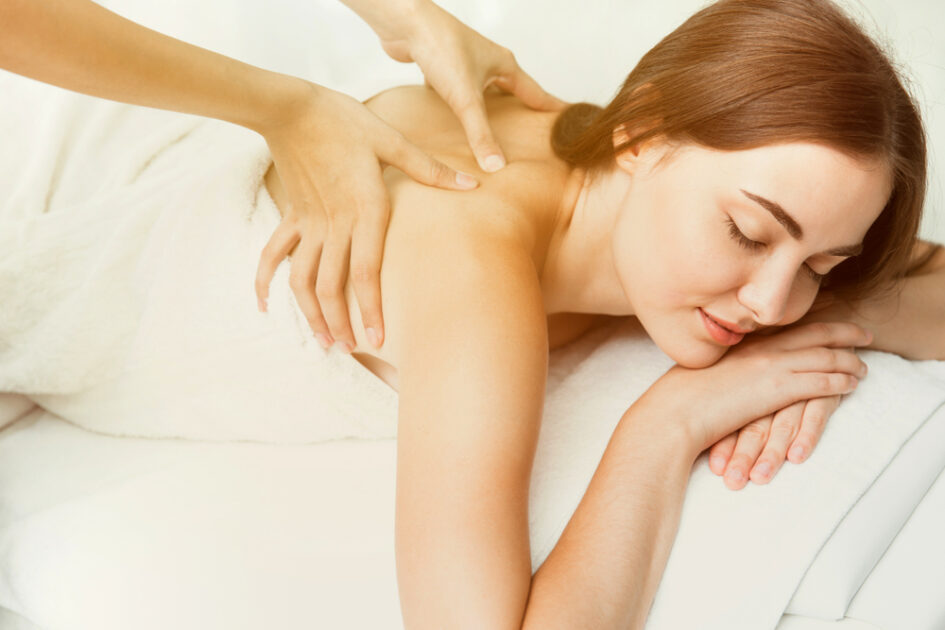Russian Massage has a multifaceted history encompassing a broad spectrum of approaches, from the conventional “venik” massage, also known as “twigging,” to modern variants introduced in the 19th century and popularized by the former Soviet Union.
What is Russian Massage?😍
Russian Massage, also known as Sacral Massage, is a manual therapy focusing on the sacrum and surrounding tissues. It promotes relaxation, reduces stress and tension, and improves circulation and flexibility in the lower back and pelvis. The therapy typically involves slow, gentle strokes and pressure point work to release tension and promote healing in the sacral area.
What makes Russian Massage Unique?❤️
The classic venik massage involves a unique process where clients lie prone as duo venik professionals rhythmically tap them using branches of oak or birch that are soaked in water. This method’s generated heat and friction elevate the body’s temperature, enhancing circulation. This form of massage has captured global attention over the past few years and is admired by both Russians and internationals.
Venik therapy is typically provided within the steam-infused atmosphere of Russian bathhouses, or “banyas.” Patrons delight in soaking in hot baths, relaxing in steam rooms preceding their massages, and refreshing themselves in cold water baths subsequently. This age-old practice might have emerged as an acclimatization strategy for the harsh Russian winters.
Russian massage oils are known for their high quality and unique blends of essential oils. Many are infused with herbs and plants, such as lavender, chamomile, and birch leaf, which provide relaxing and therapeutic properties. These oils are often used in traditional Russian massage techniques, such as manual lymphatic drainage and massage, to promote relaxation, reduce stress, and improve circulation.
What Makes Russian Massage Different From Other Massage Therapies?🎭
Besides the traditional form, many are drawn to the modern strand of Russian massage, reminiscent of sports massage, reflexology, and point massage introduced to Russia during the 1800s. This contemporary form aims to increase nervous system activity, facilitate respiratory processes, and bolster the immune system.
The practitioners of modern Russian massage employ gentler, slower techniques compared to a standard sports masseuse. They harness the power of friction to generate internal body heat and boost circulation. Furthermore, practitioners leverage a combination of vibration, kneading, and slapping methodologies to release muscle tension and soften tissues.
These massage techniques, labeled “manual therapy,” were used together with routine treatments across the 20th century, offering relief and support to patients and athletes and even extending their services on WWII battlefields. It complements other therapies and medical treatments, offering benefits like hastened injury recovery and aiding in disease management. I would advise you to consult your physician if this massage style would contribute positively to your condition, alleviate symptoms, or counteract side effects.
Did you Know About Russian Massage Benefits💡
Russian massage is renowned for curing a variety of conditions. I am listing them below-
- Carpal tunnel syndrome
- Muscular tension, stiffness, arthritis, and joint pain
- Limited range of motion
- Slow metabolic and immune function
- Circulatory and blood disorders
- Stress and anxiety
- Poor digestion, constipation, and stomach pain
- Temporomandibular joint (TMJ) issues
- Asthma and other respiratory ailments
What are the Precautions?🥲
Although there are numerous Russian massage benefits, you must be aware of the precautions before you book a Russian massage spa session. You must talk to your doctor to ensure a Russian massage suits your health. I would suggest that you postpone your Russian massage session If you have skin conditions like-
- Burns
- Infections,
- Sunburn
You should avoid Russian massage if you are suffering from conditions like-
- Deep vein thrombosis
- Phlebitis
Facing a condition like cancer, there are speculations that massage could offer positive impacts; however, direct massage on tumors is controversial. Heart patients might also find enhanced circulation with massage, but it’s not suited to all. Cancer and heart patients must confer with their physicians before discussing massage therapy. Some physicians can suggest specific massage therapists specializing in dealing with severely ill patients.
What Can You Expect from Your First Russian Massage Session? 🌿
As you plan for your first Russian massage session, check your therapist’s qualifications and credentials. Despite the comprehensive certification options provided in several U.S. states, in Russia, massage therapists undergo advanced medical training specializing in nursing or physiotherapy before commencing their intensive massage training. Your therapist should be proficient enough to advise you about their certifications and qualifications.
Russian massage adopts a myriad of age-old and contemporary techniques. Your session could last from 15 minutes up to an hour. During this time, your therapist might use unfamiliar techniques like-
- Vibration exercises involving continuous stroking of varying speeds
- Slapping or percussion actions to dissolve muscular adhesions
- Stretching movements comparable to “assisted yoga poses” that could significantly boost your flexibility.
Is Russian Massage Good for Your Infant?👶
Lastly, Russia has a long history of developing infant massage techniques, with modern practitioners using quick, light brushing strokes while applying minimal pressure during these short sessions. The increased circulation in infants’ limbs stimulates their mental and physical development.
FAQ🤔
People Also Ask These Questions About Russian Massage
Q. What is Russian massage like?
Russian massage, also known as “Svedka,” is a traditional form of massage that originated in Russia. It involves long, flowing strokes and deep pressure to promote relaxation and ease muscle tension. The therapist may also use kneading, tapping, and friction techniques to target specific areas of the body.
Q. What to wear for Russian massage?
For a Russian massage, it is recommended to wear comfortable, loose-fitting clothing that allows for ease of movement. It is also a good idea to wear a lightweight, breathable fabric, such as cotton or linen, to help you stay cool and comfortable
References:
- Smale, W. (2015). The Russian massage that’s not for the faint-hearted. Retrieved from http://www.bbc.com/news/business-31921778
- Helwig, D (2005). Russian massage. In Gale Encyclopedia of Alternative Medicine. Retrieved from http://www.encyclopedia.com/doc/1G2-3435100679.html
- Russian massage. (n.d.). Retrieved from http://www.massageprocedures.com/techniques-procedures/russian-massage
- Stubblefield, H. (2016). Russian massage. Retrieved from http://www.healthline.com/health/russian-massage#Overview1
- Wine, Z. (2008). A history of Russian medical massage. Massage Today 8(4). Retrieved from http://www.massagetoday.com/mpacms/mt/article.php?id=13796


